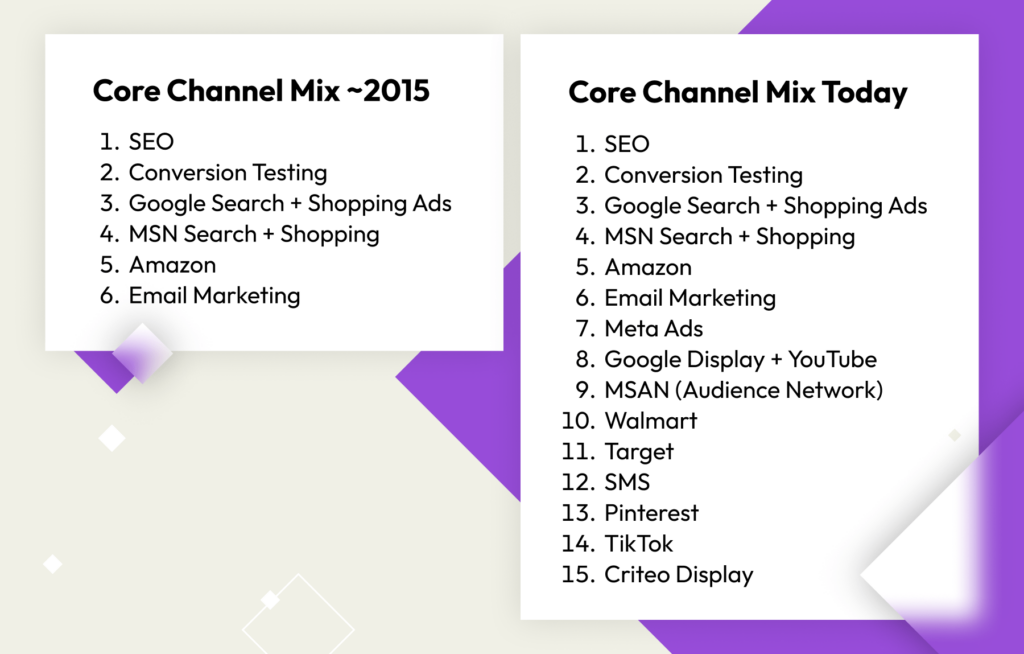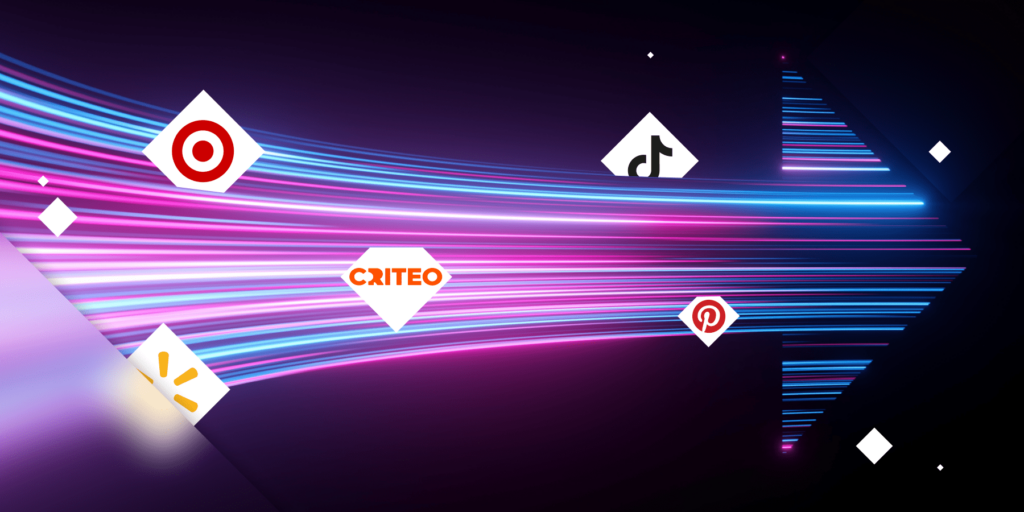
Over the past decade, five big changes have forced marketing executives to revisit how they invest, plan, and use different marketing channels to hit goals:

The number and complexity of channels has rapidly increased over the past decade, leaving marketers and business leaders scrambling to cope with the chaos. At the same time, businesses eager to maximize touchpoints with prospective buyers have exciting new opportunities to blend nascent and saturated channels into a harmonious mix, thereby reducing acquisition costs.

Our challenge today is to balance 15+ dynamic marketing channels, when not too long ago, we only had six. And it’s important to note that those six channels rarely overlapped in their functionality in the past.
Google Ads, for example, was just a tool for search experts. Today, you need to know how to define target audiences, manage customer remarketing lists, build video shorts, use AI gen tools, and set up the most accurate attribution model from an endless list of sources, options, and tagging systems.
For veterans and long-time ecommerce business owners, this feels chaotic and inefficient. It forces marketers into niche skillsets. It promotes small thinking, myopic strategies, with limited scope to scale.
Today, businesses find themselves in one of two camps:

In 2022, our team was tasked with looking into the expanding channel mix issue and presenting some solutions. The most effective answer was one that didn’t invent anything novel or new, but instead offered a way to organize the chaos—and that’s it.
When comparing audience targeting features, ad types, goal types, and how each channel was being used, commonalities became inescapable. Each channel was built in nearly the same way as the next. And no wonder the platforms are so incredibly similar, with the massive number of former Google employees now working at Meta and vice-versa.
Once you start to identify the simple intersectionality between channels, the answer becomes increasingly clear. All of marketing is trying to further certain desired outcomes, and every single platform allows you execute a strategy for any of the five desired outcomes:
You can coordinate and increase the activity levels of any of the five outcomes. Then, when these five activity centers are working together at their full potential, they should act in concert as a virtuous cycle.
For example, awareness for your brand can become so successful that it further influences loyalty and conversions, and even encourages advocacy. And that’s how you get Agital’s framework—the Virtuous Activity Cycle.

The Virtuous Activity Cycle is a strategic framework that allows you to harness the full potential of every channel in your mix by ensuring they work together. All awareness tools in every channel, working in concert. The same for each of the remaining four desired outcomes.
The result? You increase activity levels in each of these five areas in such a profound way that it activates a giant flywheel, expanding your customer relationships and leveraging them to help bring in more customers.
Harnessing the power of various channels, touchpoints, and opportunities to captivate and expand your customer base may seem like a no-brainer, but it’s often easier said than done. That’s what Agital is here for. We help businesses of all sizes put our strategic framework into action to grow their brand and achieve their key objectives.
To explore some of the transformative results we have driven for clients in ecommerce and beyond using our Virtuous Activity Cycle framework, check out our case studies. If you’re ready to see how we can help you achieve similar success, contact us today.
